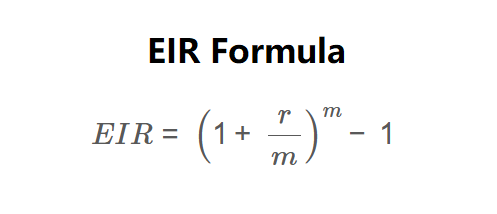 Home
Home
 Back
Back

Definition: The Effective Interest Rate (EIR), also known as the effective annual rate (EAR) or annual equivalent rate (AER), is the actual interest rate on a loan or financial product when compounding is taken into account.
Purpose: EIR provides borrowers and investors with a true picture of interest costs or returns, allowing for accurate comparison between financial products with different compounding periods.
The calculator uses the following formula:
\[ EIR = \left(1 + \frac{r}{m}\right)^m - 1 \]
Where:
Steps:
Calculating EIR is essential for:
Example 1: Calculate EIR for a loan with 8% nominal rate compounded quarterly
Example 2: Calculate EIR for a savings account with 5% nominal rate compounded monthly
Q: What's the difference between nominal rate and EIR?
A: Nominal rate doesn't account for compounding, while EIR shows the actual annual rate including compounding effects.
Q: Does more frequent compounding always mean higher EIR?
A: Yes, for a given nominal rate, more frequent compounding results in a higher EIR.
Q: What's the maximum possible EIR for a given nominal rate?
A: As compounding frequency approaches infinity, EIR approaches e^r - 1 (continuous compounding limit).
Q: When is EIR particularly important to consider?
A: EIR is crucial when comparing financial products with different compounding periods or when compounding occurs more frequently than annually.